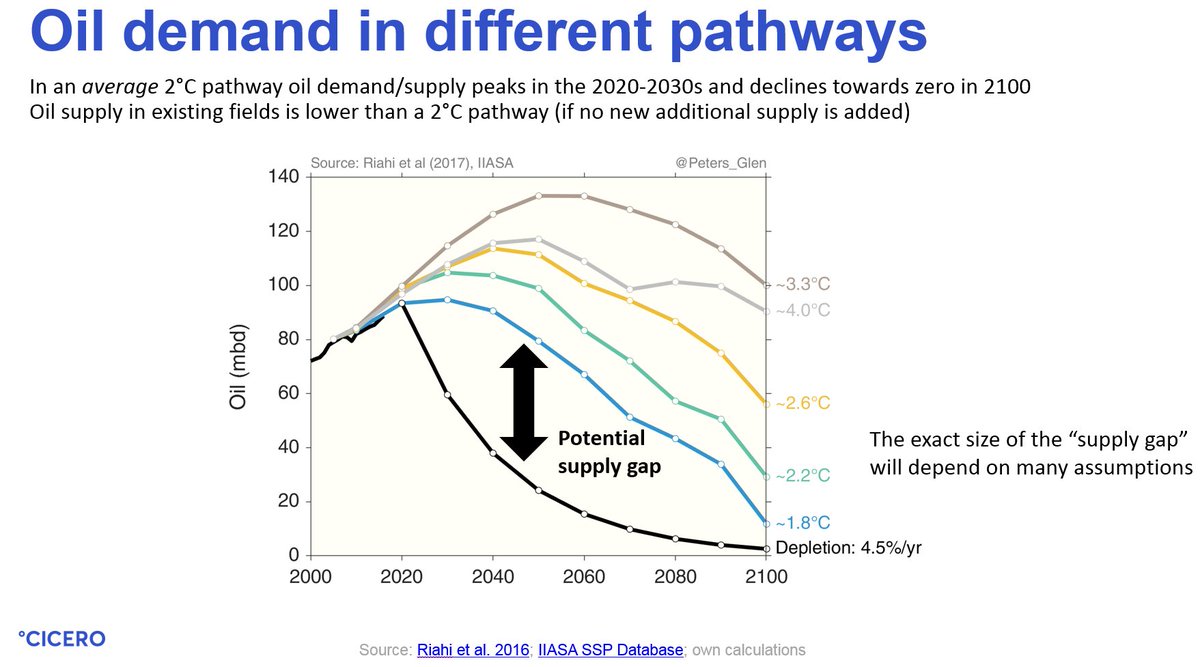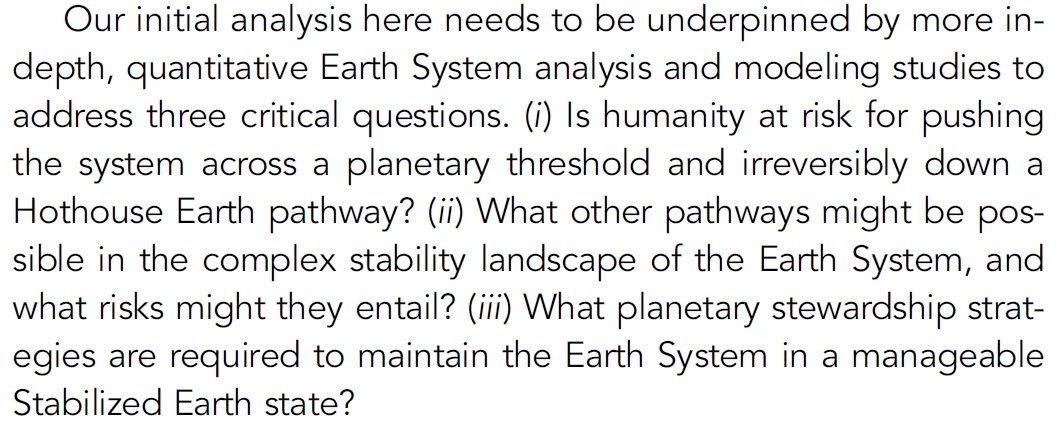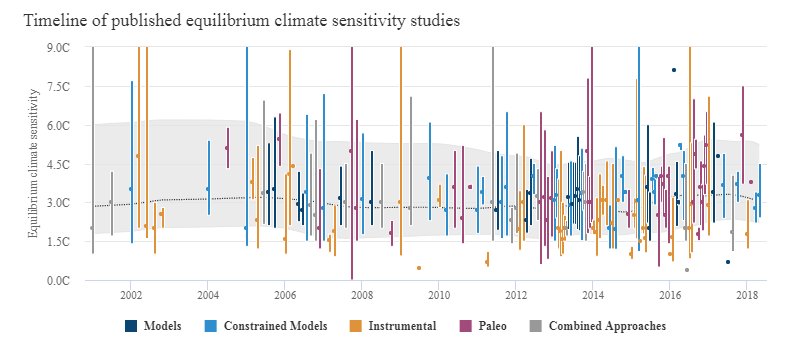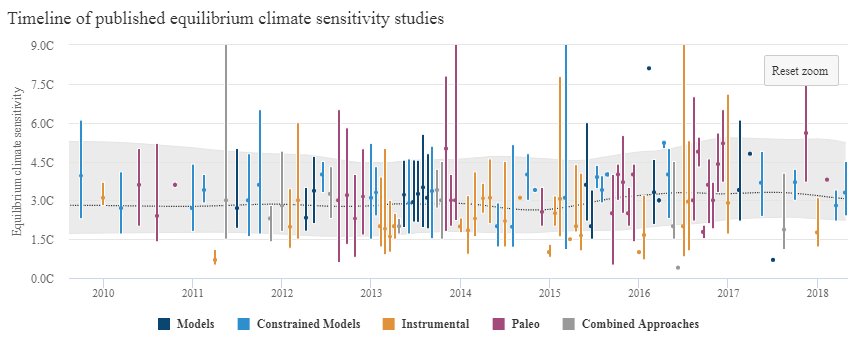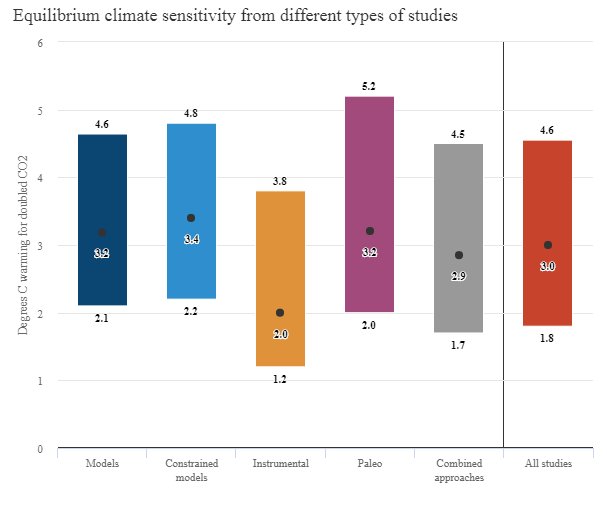THREAD
Is the new Shell Sky scenario a radical pathway to 2°C or just a justification for more fossil fuels?
* Primary energy consumption high
* CO₂ as expected for a "well below 2°C" scenario
#ShellScenarios
cicero.oslo.no/no/posts/cicer…
Is the new Shell Sky scenario a radical pathway to 2°C or just a justification for more fossil fuels?
* Primary energy consumption high
* CO₂ as expected for a "well below 2°C" scenario
#ShellScenarios
cicero.oslo.no/no/posts/cicer…
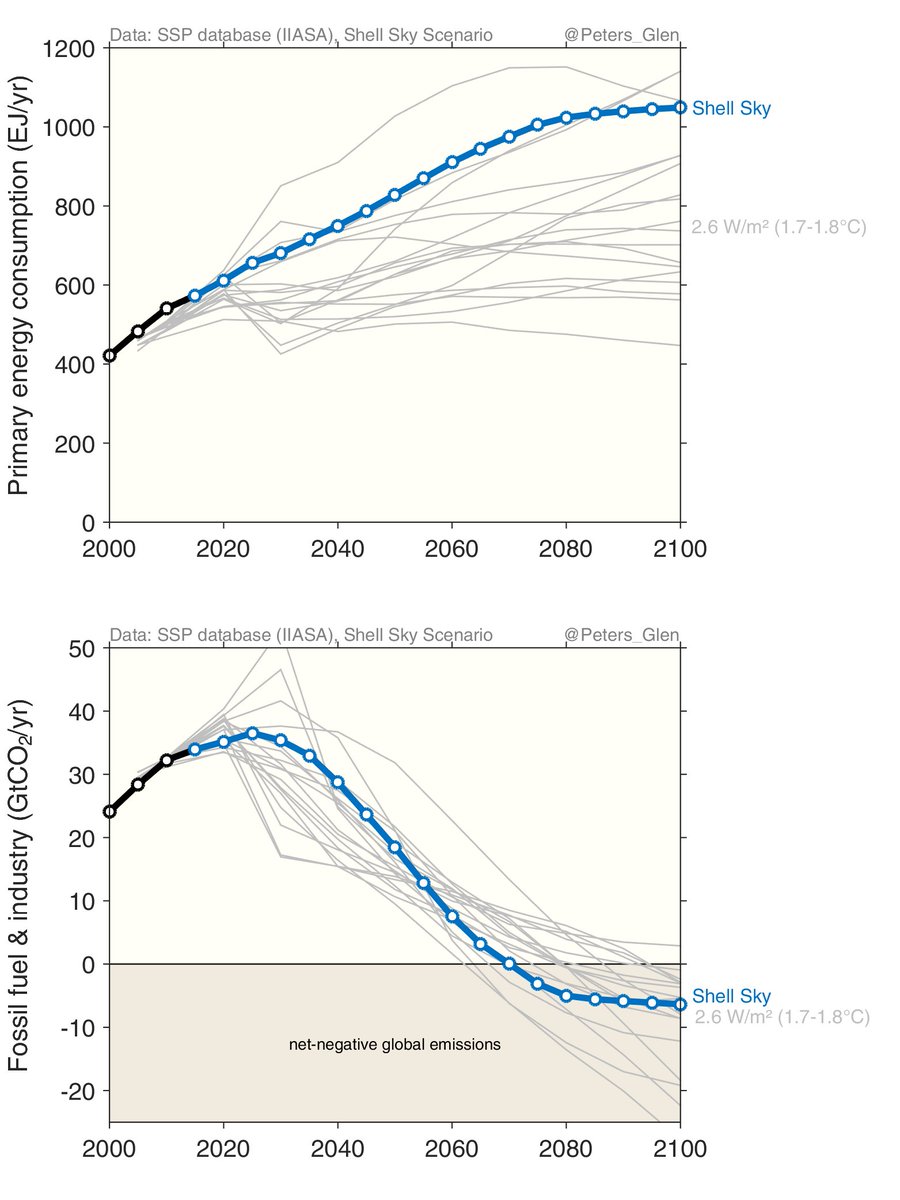
Fossil fuels:
* Coal consumption higher than most 2°C scenarios
* Oil consumption as expected, but high in 2100
* Gas low, but no one knows the role of gas in the future
Bioenergy:
* Higher than IEA, but in line with most other 2°C scenarios
* Coal consumption higher than most 2°C scenarios
* Oil consumption as expected, but high in 2100
* Gas low, but no one knows the role of gas in the future
Bioenergy:
* Higher than IEA, but in line with most other 2°C scenarios
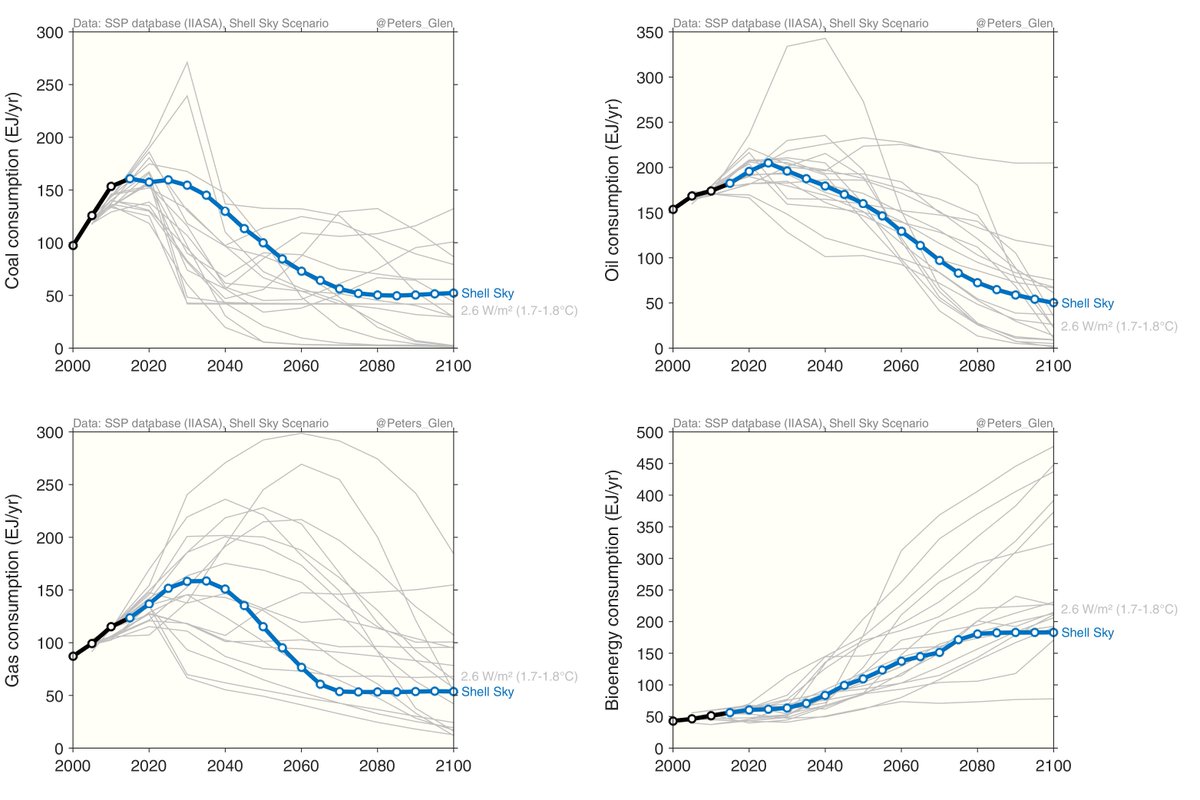
Carbon capture and storage
* 10,000 CCS facilities needed by 2070
* Similar to IEA & Statoil (in 2040)
* Lower than most other 2°C scenarios, which are rather bullish on CCS
* 10,000 CCS facilities needed by 2070
* Similar to IEA & Statoil (in 2040)
* Lower than most other 2°C scenarios, which are rather bullish on CCS
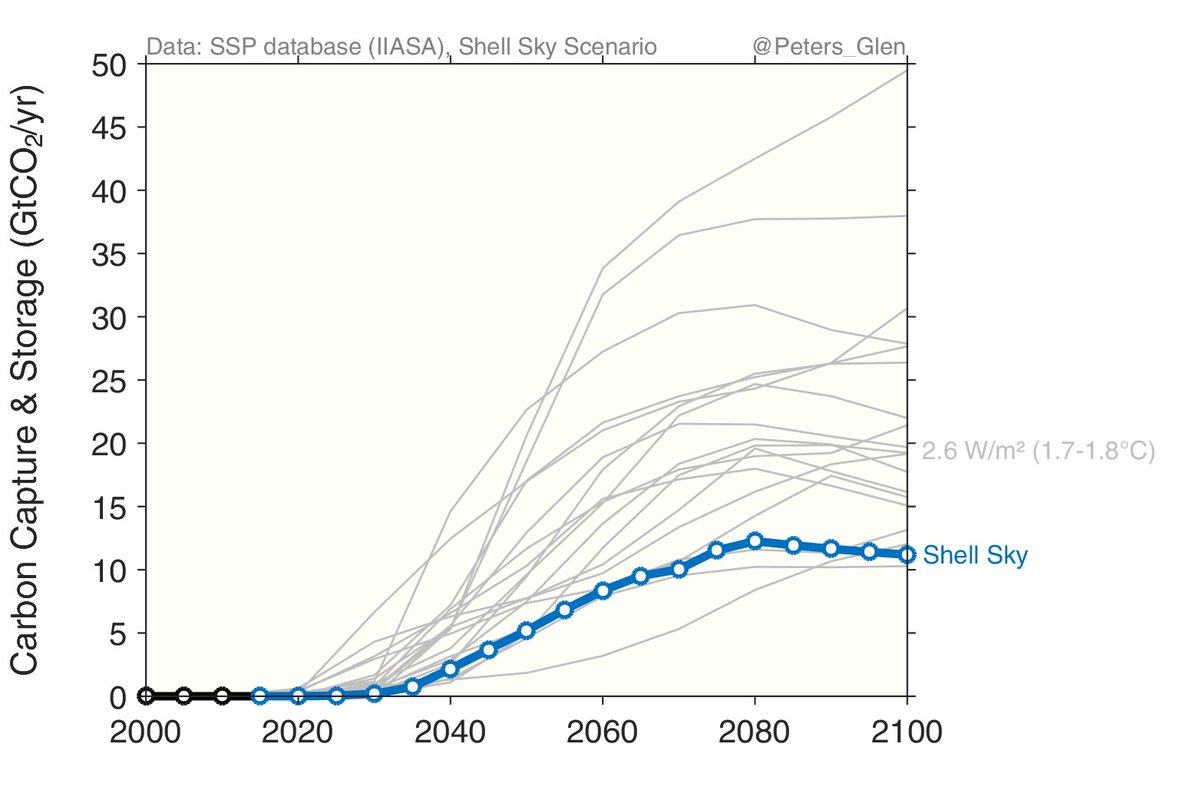
Renewables
* Hydro, nuclear, geothermal (not shown) consistent with other 2°C scenarios
* Wind has rapid growth to 2050, higher than most 2°C scenarios
* Solar is higher than all other 2°C scenarios
* BP is going solar!
* Hydro, nuclear, geothermal (not shown) consistent with other 2°C scenarios
* Wind has rapid growth to 2050, higher than most 2°C scenarios
* Solar is higher than all other 2°C scenarios
* BP is going solar!
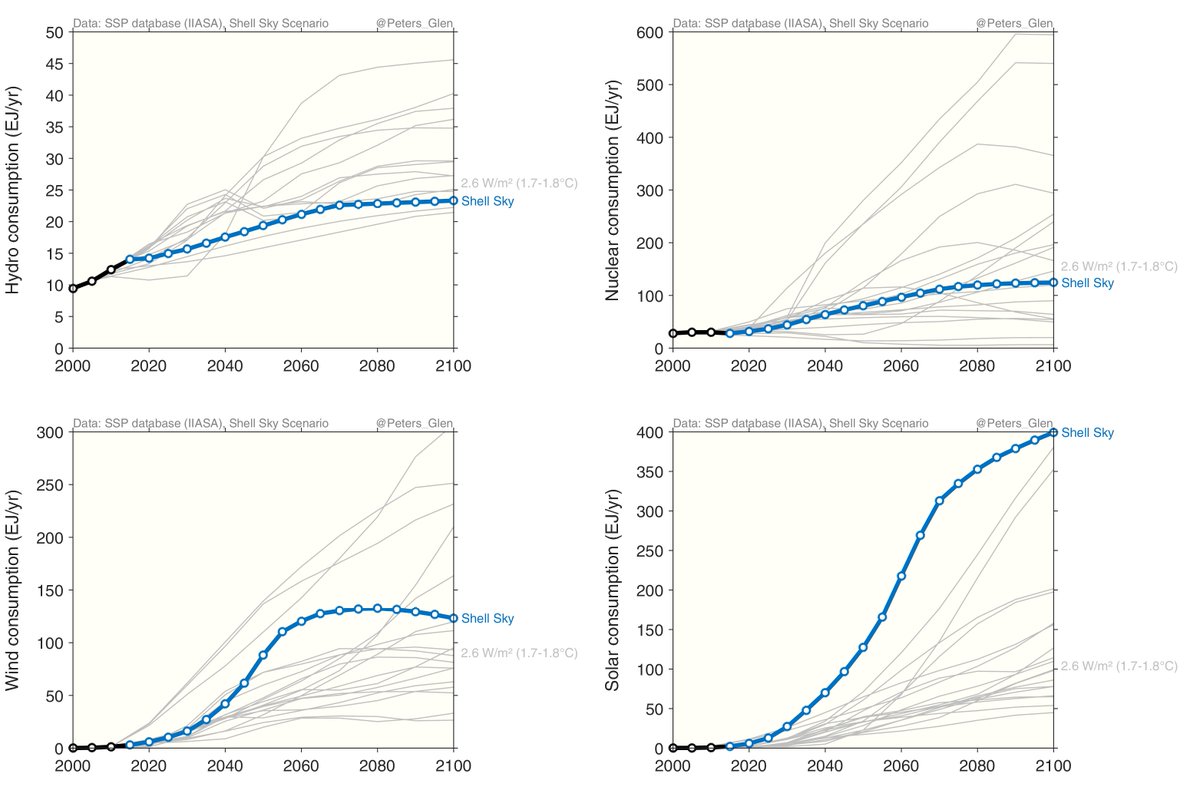
In summary, relative to other 2°C scenarios, Shell Sky has
* High primary energy consumption
* CO₂ as expected
* Higher than expected coal
* Much higher than expected wind & solar
* High, but modest CCS
* A reasonable path to 2°C, with challenges
Details: shell.com/energy-and-inn…
* High primary energy consumption
* CO₂ as expected
* Higher than expected coal
* Much higher than expected wind & solar
* High, but modest CCS
* A reasonable path to 2°C, with challenges
Details: shell.com/energy-and-inn…
• • •
Missing some Tweet in this thread? You can try to
force a refresh





